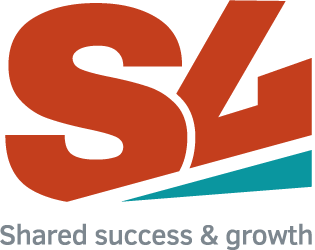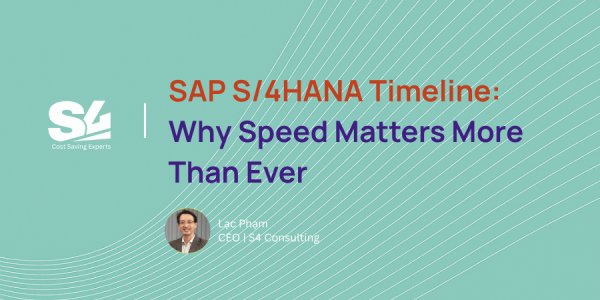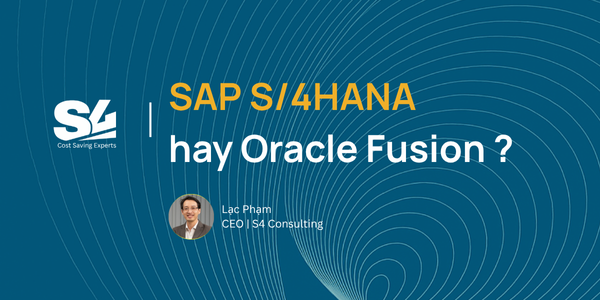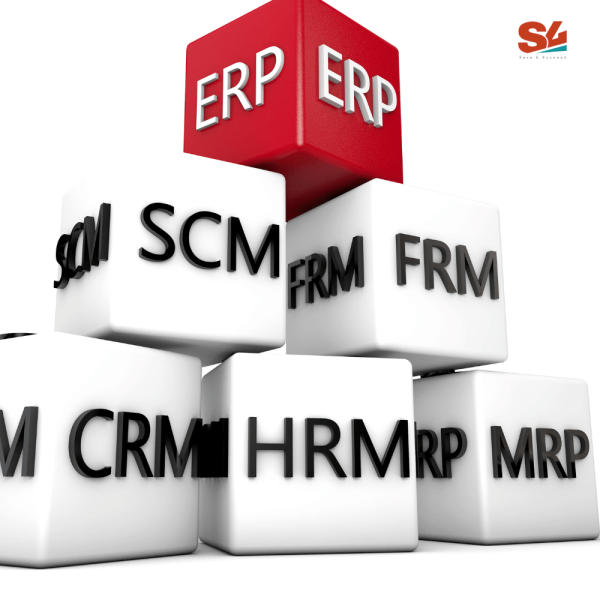
Before Investing in SAP S/4HANA, Every CEO Should Answer These 3 Questions
Author: Pham Hoang Lac – CEO, S4 Consulting
When Every CEO Is Talking About SAP
For many years, SAP S/4HANA has been viewed as the gold standard of enterprise ERP. It’s the system global giants use to run their end-to-end operations — from finance and supply chain to manufacturing and reporting.
Yet one truth is often overlooked: not every organization should choose SAP S/4HANA.
Implementing SAP is not just a software upgrade. It is a complete business transformation project – one that redefines processes, data models, and the way your people work.
Before signing off on a project that could take two years and millions of dollars, every CEO should pause and ask three key questions.
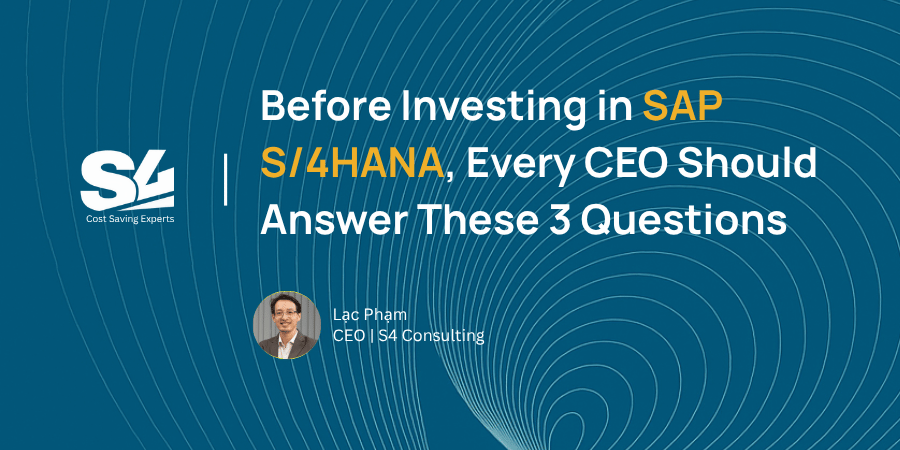
1. What Is Your Real Objective – To Deploy Software, or to Redesign Your Organization?
SAP S/4HANA is not a financial or accounting tool. It’s a comprehensive business platform designed to standardize and control how your company operates.
A successful S/4HANA project often comes with deep organizational change: new workflows, new approval models, and new decision-making structures.
If your goals today are limited to:
- Consolidating financial data
- Improving reporting accuracy
- Unifying a few business processes
…then implementing a system as complex and resource-intensive as S/4HANA may not be the best first move.
Organizations that truly benefit from SAP typically have:
- Multiple legal entities or multinational operations
- Complex supply chain and production environments
- A clear global governance model requiring centralized control
For growing mid-size businesses, the smarter first step is often to build a flexible, cloud-based ERP foundation that can scale over time — instead of starting with a heavyweight global platform.

Stop the Waste !
Acumatica Cloud ERP: More Modern – Up to 50% Lower Total Cost of Ownership.
2. Is Your Internal Team Ready for an 18–24 Month Transformation?
The biggest challenge in any ERP project is rarely technology. It’s organizational readiness.
An S/4HANA implementation requires high engagement from across the enterprise — finance, operations, supply chain, HR, and IT.
To succeed, you will need:
- A strong internal project team capable of making timely business decisions
- Dedicated process owners from each key department
- A clear plan for change management, communication, and training
Many companies underestimate the internal workload. Once the implementation partner arrives, the cost clock starts ticking, and any delay in decision-making quickly drives cost overruns and project fatigue.
Before investing in SAP, evaluate your readiness honestly.
If your organization has never gone through an ERP project before, start with a readiness and strategy phase — defining your future-state processes, internal governance, and data ownership — before the implementation begins.
3. Is Your ERP Budget a Strategic Investment — or a Technology Expense?
The total cost of an S/4HANA project goes far beyond software licenses. The real investment lies in integration, process redesign, data, training, and long-term change management.
A typical mid-sized implementation includes:
- Software licensing and maintenance fees
- Consulting and configuration services
- Data migration, testing, and user training
- Change management and post-go-live support
For 30–50 users, total implementation costs often range from USD 500,000 to over USD 2 million, not including internal resources.
Return on investment (ROI) typically takes 30–36 months, assuming a smooth project.
This is why many forward-looking CEOs are now exploring modern Cloud ERP platforms that deliver faster time-to-value with lower upfront investment.
One example is Acumatica Cloud ERP — a U.S.-developed platform built for growing mid-sized enterprises. Acumatica enables modular deployment, rapid implementation, and full integration across finance, operations, and supply chain — without the heavy infrastructure of traditional ERP.
4. The Final Thought: Choosing ERP Is Choosing a Strategy
Selecting an ERP is not just a technology decision — it’s a strategic one.
If your goal is to achieve global standardization and enterprise-scale governance, SAP S/4HANA remains a strong option.
But if your priority is speed, agility, and capital efficiency, then a cloud-first ERP approach may deliver faster, more sustainable impact.
In the end, what defines success is not the system itself — it’s whether your organization is ready and aligned to transform.
Don’t start with the software. Start with the strategy.

Stop the Waste !
Acumatica Cloud ERP: More Modern – Up to 50% Lower Total Cost of Ownership.


